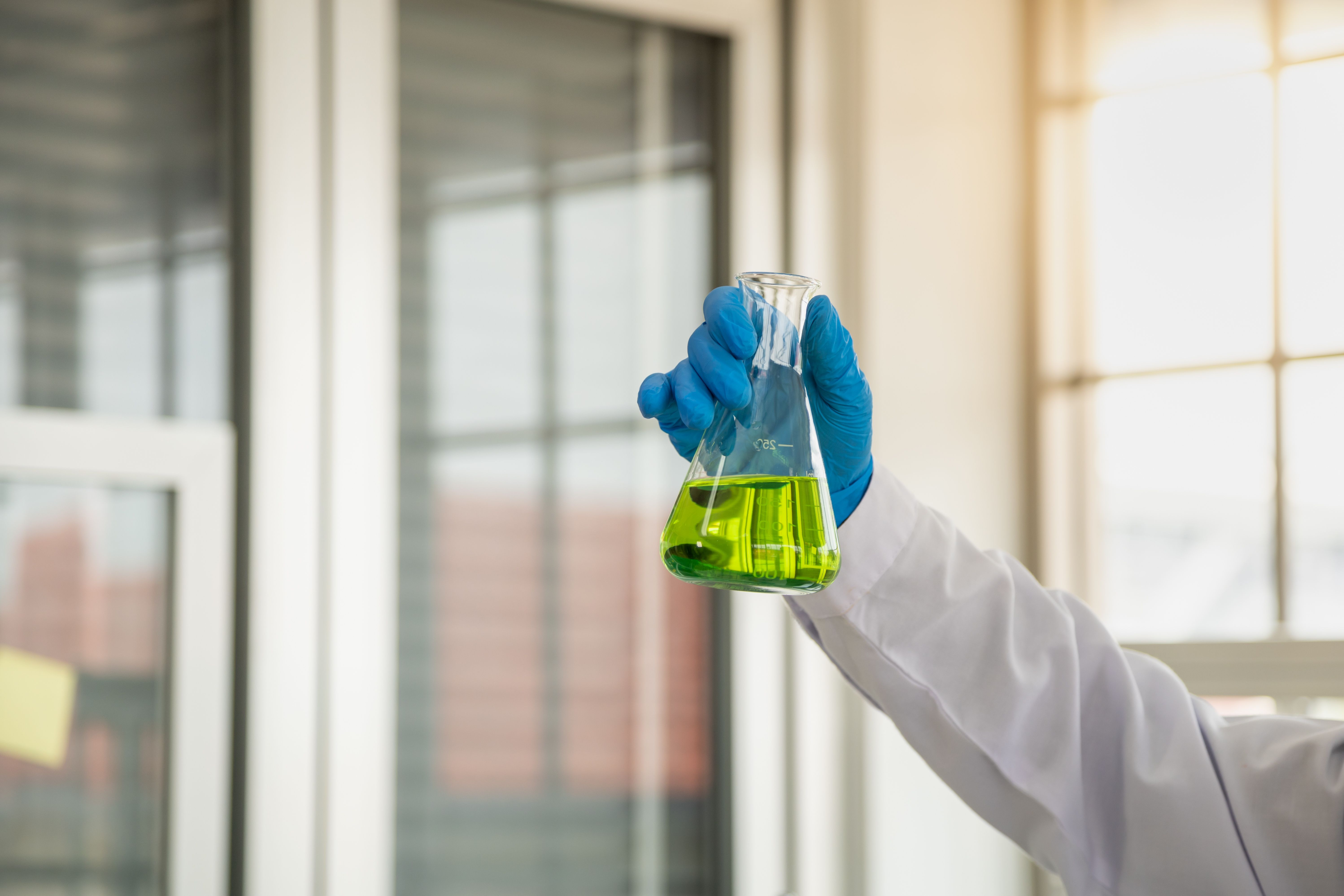Green Chemistry Top of Mind at Analytica
Analytica 2024, the world’s largest trade fair, returned to Munich, Germany this year with a distinct focus on sustainability—a very hot topic in analytical chemistry. Branding itself the “meeting placing for the Green Lab,” Analytica brought together more than 1,000 exhibitors from around the world, many of whom presented new products and services that boasted greener solutions for customers.
Unsurprisingly, environmentally friendliness has been a focus of many recent conferences and trade shows for analytical scientists. For example, many of the sessions at Pittcon, which took place in San Diego, California earlier this year, were focused on the analysis of per- and polyfluoroalkyl substances (PFAS), microplastics, and other environmental contaminants.
Science and Healthcare Concept. Closeup of doctor scientists hand holding green liquid chemicals flask in a laboratory. | Image Credit: © Montri Thipsorn - stock.adobe.com.

Climate change has forced governments and investors to put pressure on companies to pursue greener manufacturing practices and implement new environmental, social, and governance (ESG) policies that require themselves, and their vendors, to seek to become more sustainable.
A 2023 survey from professional services firm KPMG found that 74% of investors in the United States and 82% of investors in Europe are now including ESG in their mergers and acquisitions agenda. They’re also willing to pay a premium for a target that demonstrates a high level of ESG maturity, KPMG found.
This has big implications for instrument vendors, who could stand to lose business if they don’t begin to search for more sustainable solutions. But vendors need to do more than just ship products in recyclable boxes. It’s about reducing the amount of solvent in separations, and switching from carbon to more sustainable gases, like nitrogen, among other methods.
In an interview with LCGC International at Analytica, Jeff Zonderman, senior vice president of Bruker Applied MS, said the company, like many others in the space, is implementing new sustainability initiatives.
“Large companies that we work with put it in their terms and conditions that Bruker needs to show that they're moving towards sustainable products and removing 90% of the 99% of the organic solvent waste,” he said. “Bruker is looking at techniques like ion mobility mass spectrometry (IM–MS), and like direct analysis in real time (DART), so that the first thing we can affect immediately is the workflow. We can make that more sustainable.”
But companies aren’t the only ones that need to address this problem. Research scientists are looking for more sustainable solutions, too. Elia Psillakis, a professor in Water Chemistry at the School of Chemical and Environmental Engineering, at the Technical University of Crete in Greece, and her team are working on circular analytical chemistry, which involves using renewable chemicals and materials that can be recycled or converted into raw materials. Making the process more “circular,” and therefore, mostly eliminating waste.
“We’re moving a step forward. We have certainly defined greenness in analytical chemistry,” she said. “We are also trying to eliminate waste by cycling back the waste from laboratories in analytical chemistry.”
Gertrud Morlock, chair of the Food Science department at Justus Liebig University Giessen in Germany, developed 2LabsToGo, an open-source portable lab that can do low-cost planar separations in liquid chromatography.
“We combined two different labs, the chemistry lab, the chromatographic separations lab with a biological assay lab. It is combined in a small-scale system and the benefit is that the analyst can now investigate unknowns,” she told LCGC at Analytica. “It is the most sustainable lab of the future. Because you have two fully equipped labs consolidated in that small, do it yourself system.”
The conversation about green chemistry is an ongoing one and is likely to be the focus of many future Analytica meetings—and other conferences—to come. Whether or not industry and academia will be able to make meaningful changes is still yet to be seen. But with some of the brightest minds in the world working on tackling these problems, the future will undoubtedly be at least a little greener.
Troubleshooting Everywhere! An Assortment of Topics from Pittcon 2025
April 5th 2025In this installment of “LC Troubleshooting,” Dwight Stoll touches on highlights from Pittcon 2025 talks, as well as troubleshooting advice distilled from a lifetime of work in separation science by LCGC Award winner Christopher Pohl.
Characterizing Plant Polysaccharides Using Size-Exclusion Chromatography
April 4th 2025With green chemistry becoming more standardized, Leena Pitkänen of Aalto University analyzed how useful size-exclusion chromatography (SEC) and asymmetric flow field-flow fractionation (AF4) could be in characterizing plant polysaccharides.




